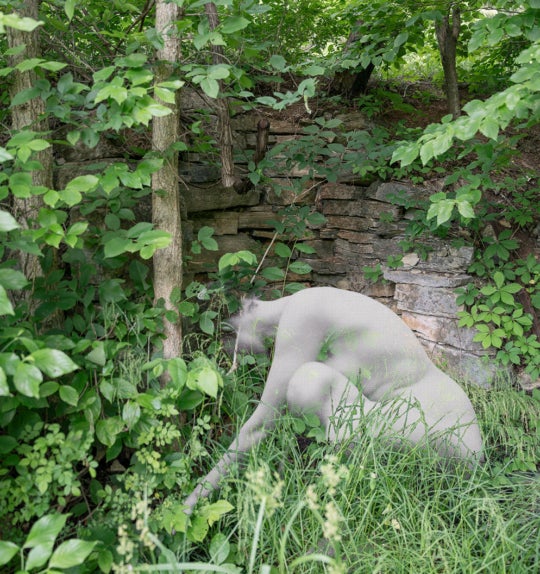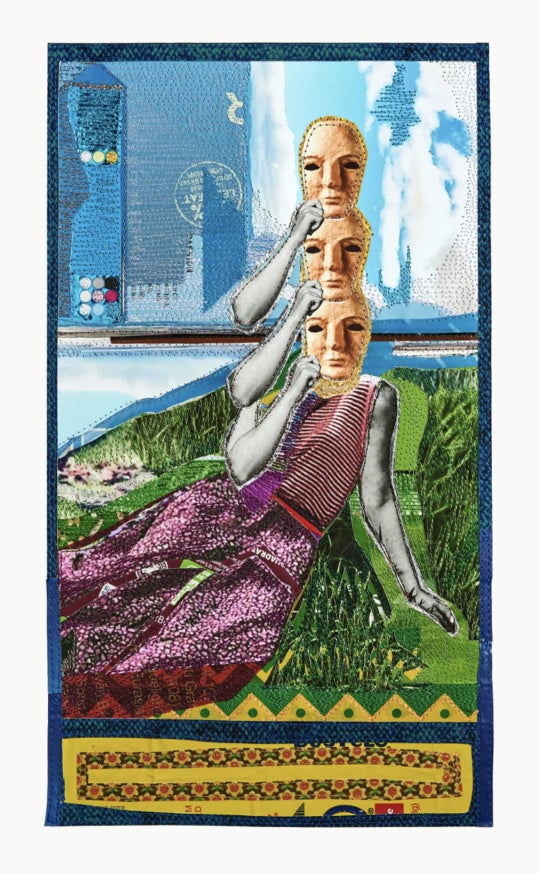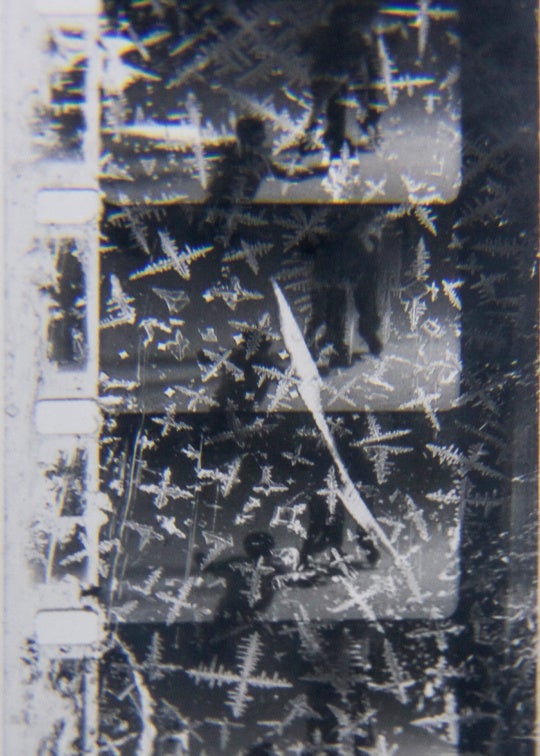
We visited painter Eric Mack at his East Lake/Oakhurst home, which he has used as a work space since returning from a long stint in Germany. His house was filled with artworks, some dating back to his college days, ranging from small to quite large. Mack has since moved into a studio at the Westside Cultural Arts Center. Over a long, chilly afternoon and a light German-style brunch, we talked about his life, his prolific body of work, and what makes him tick. This is a condensed and edited version of that visit.
[su_divider top=”no”]
Carl Rojas: I always like to hear people’s stories. So tell us about your parents, growing up, how you ended up in Charleston, then Atlanta.
Eric Mack: Both of my parents are from South Carolina. My father’s from Cross, South Carolina; my mom’s from Walterboro, which is close to Buford. They met when they were in school. He was studying electrical engineering, she worked at a library and was trying to get a license to be a cosmetologist. I was in kindergarten at a place right up the street from the library, so after school I would wait with my mom at the library. I remember that there were books on calligraphy. I was amazed; I took the books home and was practicing and already turned on by this. There was also a great book by Louis Pasteur that was made for children, about how he discovered penicillin.
CR: What did your dad do?

EM: He works at the South Carolina Electric and Gas power company; he’s been there for nearly 40 years. But he’s not the guy that climbs the poles; he prepares the plan when it breaks down. He also worked on our cars at the house and did all the plumbing. We had 2½ acres where I grew up, so we did a lot of outdoor stuff: chopping, cutting, digging, planting vegetables, you know. I was hardcore into skateboarding; I was trying to get a sponsor.
CR: When did making art go from “this is kind of fun” to “this is what I want to do?”
EM: Probably in high school, when I told my mom [laughs]. I said, “Yeah Mom, I wanna go to the Atlanta College of Art.” And she says, “Okay, that’s cool, but what are you going to do when you graduate?” I said, “Mom, I don’t know, but I have to go.” That’s when I knew I was going to do art.
Years later, I was at Pearl Art Supplies, which was on Roswell Road back in the day, and I was talking to Kojo Griffin—it might’ve been 1999—and I had just finished school. I knew him because Charles Nelson, who was my professor, was Kojo’s best friend. I said, I’m an illustrating major but I like painting too, so I’m going to do 50 percent illustration and 50 percent painting. And Kojo said, “How are you gonna compete with any other painter that’s giving 100 percent when you’re only giving 50 percent? You have to make a choice.”

CR: One of the things that draws me to your work is the geometry. Do you also have an architectural passion?
EM: I think my architectural inspirations came early on. I was building skate ramps when I was 12-13. I would draw out what I needed to build a halfpipe.
I want more dimension in my work, like third dimension. I have some work on glass [shows a wooden box frame with glass insets]; there are three sheets of glass that create depth.
Stephanie Cash: Did you build the frames?
EM: No, actually, I found them out in Salt Lake City at this little craft store. I said, hmm, what can I use this for? That was seven years ago, and I just did this recently.

SC: Isn’t that the upside to working in a small space? Would you have done these if you were in your big studio?
EM: Probably not, because you have space to do all sorts of other things.
SC: How does working on a smaller scale affect your process?
EM: It’s very personal. It’s like you have this one small world that you want to complete, and you don’t have a lot of open space to get lazy, you know what I mean?

SC: So you’ve been working out of your house for a while?
EM: When I came back here from Germany, I didn’t really have time to find a studio, so I just moved the work in here. I’ve been working on smaller, medium-sized stuff, which is cool, because all of the larger work for shows is already completed.
CR: What took you to Germany?
EM: My girlfriend’s job transferred her over there, and then I moved over. We really didn’t think it would be that long, but then they extended her contract, and within that time I got a stipend for my studio in Munich. You have to be a resident to get in, and I had been there for seven months.




